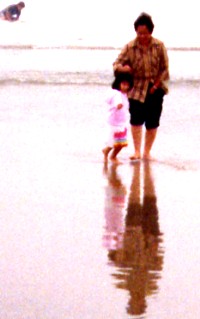 |
Anthropology Something
to live for CAROLINE
HUMPHREY Margaret
Paxson SOLOVYOVO:
The story of memory in a
Russian village 390pp. Paperback,
$24.95;
distributed in the Combined
Academic Publishers.
£16.95. 0 253
21801 2 Marx
wrote that "the
tradition of all of the dead generations weighs like a nightmare on the
brain
of the living". Much of Margaret
Paxson's Solovyovo describes the unexpected
contortions of the fallout from that battle. For villagers living in
the
forested north of The
"radiant past"
is not a specific era. For some it is a vague time before the Second
World War,
for others it is even identified with the grim years of famine around
1947; but
one way or another it coincides with Stalinism. Paxson's
anthropological
study discusses the villagers' conceptualization of the past in
general, their
calendars and remembrance of ancestors, for example. But much of her
book's
interest for a general reader lies in the way she carefully uncovers
the moral
values that underlie the idea of the "radiant past" and make it
relevant for today. These are people, mostly middle-aged or elderly,
whose lives
are, and have been, almost unimaginably hard. Deeply attached to their
household farms, they were torn away and forced into a collective, many
had
relatives who were arrested and died in labour camps (there are some
survivors), they ate grasses in famine, and they toiled almost without
break in
the fields and byres. Even if the collective allowed holidays, how
could people
go away and abandon their cow, which provided lifesaving sustenance? Wages
and conditions improved
somewhat in the late Soviet era, but thereafter they have, slid
backwards: the
electricity and telephones are halting; houses have no running water or
drainage; petrol is expensive and the roads regularly impassable, so
they rely
on horse cart and sleigh. The shop has closed, the clinic has closed.
This has
become a subsistence economy: the cow, fishing, hunting, gathering
berries, and
the acres of potato fields are how you get by: the scythe, the spade
and hand
milking are how you do it. Yet not a single villager here is
illiterate, and
they have those long dark hours of winter to read newspapers, sing
songs,
remember the past and mull over what they were promised. The
villagers idealize a time
in the past when people were equal, cooperative and close to one
another. The
"radiant past", in fact, describes a quality of relationships. It
goes with the idea of svoi (being one
among one's own), it is inimical to greed, to individuals who stand
out, to
aliens. These people mistrust money and hardly use it among themselves.
One man
remembered "the happiest period of my life" during the great famine
of 1947, because "it was as if there was some kind of inspiration then
.... the mood of everyone was better, regardless of the hard life. It
was more
festive. We associated with one another more". The
spirituality of that time
was nothing to do with God - it consisted in freedom from greed and
jealousy.
Indeed, the villagers repeatedly say they were free (svobodniye)
during Stalinism, meaning by this not political
liberty but being equal, open to one another, expressive, oriented to
the other
rather than oneself. Stalin comes into this picture as the great master
who
assured the power of the totality, maintained order and decent
behaviour. If
the price was camps, executions and fear, so be it - were terrible but
necessary.
Above all, the "radiant past" contained within it the promise of the
"radiant future", which is the perfection of all the qualities of the
idealized past, harmonious, free and morally better than the present.
In this
village world, as Paxson describes it, the old Russian forest spirits,
the
miraculous, curses, the evil eye and so forth are not divided off from
the
mysterious "forces" that spring upon people in economic or political
life. "They [the secret police] came by night", people say, and these
arrest stories have the same structure as other narratives of the
miraculous.
The same means is used to rescue any such situation - a particular kind
of
heartfelt "address" to the spirit forces, or to the tsar, the police,
an icon, this being a gesture beyond the normal, a way of pulling in
the alien
powers into the sphere of relationships, taming them. Solovyovo
has some longueurs.
It is overdutiful in referring to anthropological theories, and Paxson
sometimes assumes a faintly didactic tone of patient explanation.
Nevertheless,
it is a remarkable achievement. Margaret Paxson covers a wide range of
themes
with great subtlety. Her use of an extended metaphor ("the landscape of
memory") helps her to express connections between different pools of
the
villagers' recollections and point to depths that other writers have
not
perceived. She pays insightful attention to the Russian language. Her
sensitive
empathy with these bleak lives has helped her to write the best
ethnographic
study of Russian country people available today. |